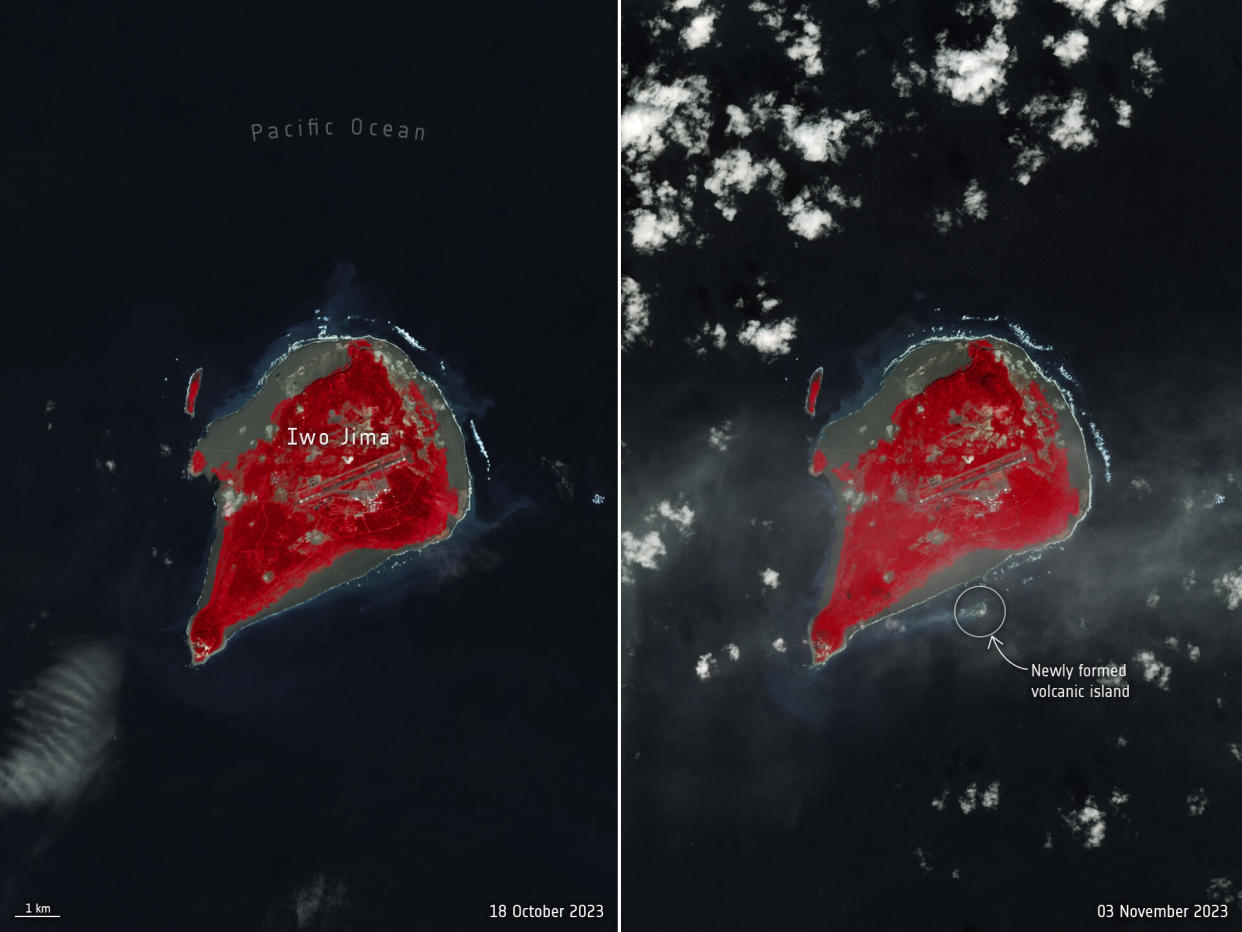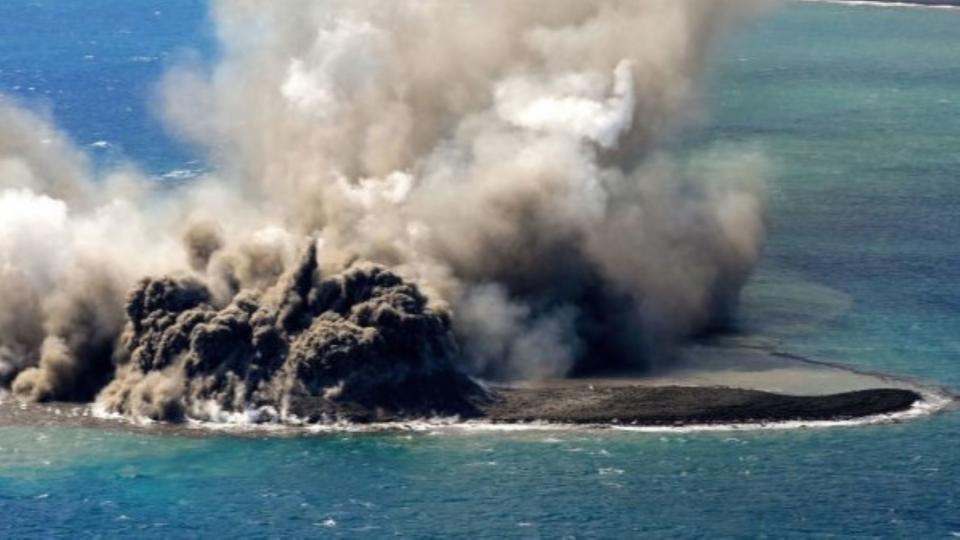New island that emerged from the ocean off Japan is now visible from space

A newborn island that recently emerged from the Pacific Ocean after an underwater volcanic eruption is now visible from space, images from the European Space Agency (ESA) reveal. The satellite images show the new landmass sitting around 0.6 mile (1 kilometer) off the coast off Japan's Iwo Jima island.
The submerged volcano began erupting on Oct. 21, with activity ramping up over the next 10 days. By Oct. 30, explosions were taking place every few minutes, according to a translated statement. The eruption threw large lumps of rock into the air, and shot a jet of gas and ash over 160 feet (50 meters) almost vertically above the water's surface.
Since the volcano started erupting, "volcanic ash and rocks have piled up to form the new island, which is now also visible from space," a statement from the ESA said. The latest image was captured with the Landsat 9 satellite on Nov. 3. It shows Iwo Jima — which sits around 750 miles (1,200 km) south of Tokyo — before and after the latest eruption.

Along with the new island, the volcano also produced a sea of floating pumice — an extremely porous type of rock that forms during explosive eruptions. New analysis of this pumice found its chemical composition differed from that of ejecta from other volcanoes in this chain, according to a different translated statement. The pumice likely came from an eruption along the back-arc rift zone — the area behind a volcanic arc, the statement noted.
RELATED STORIES
—Earth's newest 'baby' volcano is painting Iceland's Fagradalsfjall region with incandescent lava
The latest eruption is in almost the exact same spot as one that took place in July 2022, suggesting magma activity is resuming at Iwo Jima. The eruption has now subsided, Yuji Usui, an analyst with the Japan Meteorological Agency, told the AP.
The new island was approximately 330 feet (100 m) wide and up to 66 feet (20 m) high, but it appears to be shrinking as the waves erode the "crumbly" rock, Usui said. Whether the new island will survive is unclear and depends on what it is made of: If it is lava, it could remain for longer. "We just have to see the development," he told the AP.

